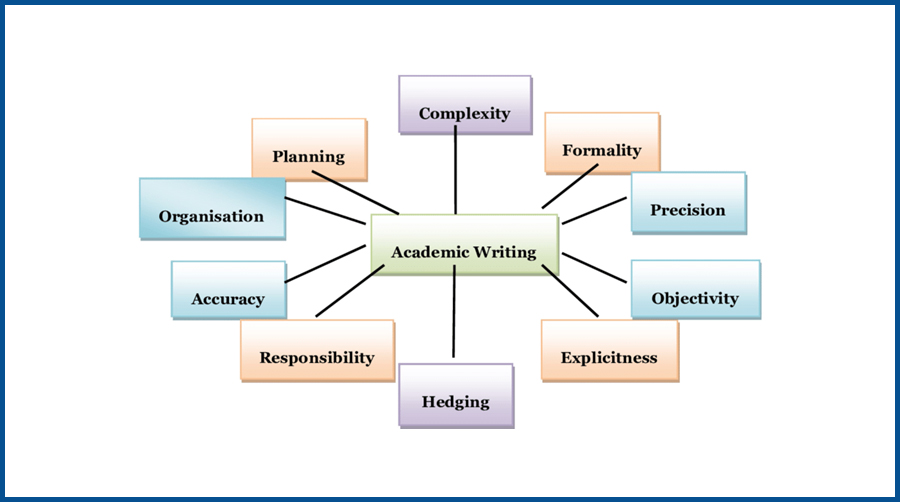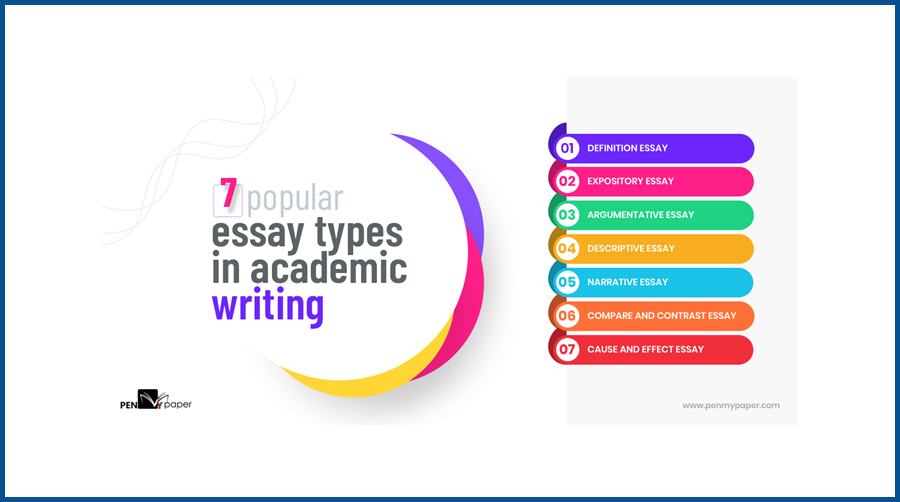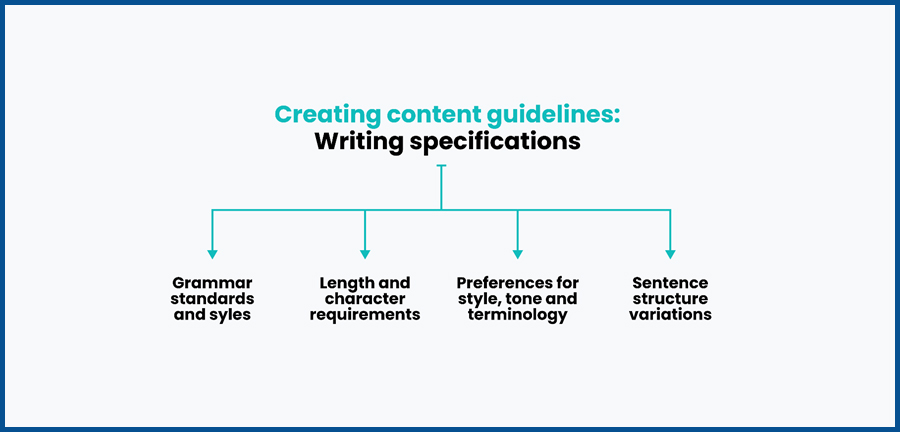How to Write a Good Academic Blog Post
Writing an academic blog post can be a daunting task. Especially, if you are writing your first academic blog post.
An academic writing blog is different from other forms of writing.
You’ll find plenty of tips for writing blogs, but academic wiring requires proficiency in certain skills. You must know how to plan and structure your work before you start writing an academic blog post.
More importantly, you should have a good grasp of writing tones. Also, you need to acknowledge your references appropriately to make your writing relatable.
In case you are unaware of all these aspects, don’t worry. This guide includes all the information you need on how to write a good academic blog post.
What Is Academic Writing?
Academic writing is generally quite formal and focused with a clear, concise goal. An academic blog post is not only well structured but is also backed up by evidence.
The sole purpose of academic writing is to improve the reader’s understanding while avoiding conversational language.
Unlike a blog post, academic writing does not use informal vocabulary or casual language. Instead of directing people or feelings, it emphasizes ideas and facts.


Source: researchgate.net
However, when you are writing academic blog posts, you can use informal or conversational language. You can present your thesis statement and utilize evidence and analysis.
How Long Are Academic Blogs?


How Long Are Academic Blogs?
The length of an academic writing blog depends on the topic. Usually, an academic blog consists of 500 words and may range up to 2,000 words.
The length of academic blogs also depends on the points that you want to make. This also includes relevant references, supportive evidence, and arguments.
Why Write an Academic Blog?


If you are thinking about why write an academic blog you need to consider the benefits.
The very first advantage of a good academic blog post is that it drives people towards your research. You can share your academic research with a wider audience. Also, you can make your research more shareable when you post it online.
Aside from improving your communication skills, academic blogging polish your writing skills. You can convert complex research and ideas into a concise, readable blog post.
Types of Academic Writing


To make your academic writing more relevant, you must be aware of its types. There are four main types of academic writing and each has its specific purpose.
Better knowledge about these will help you understand how to make your academic writing relatable.


Source: penmypaper.com
Descriptive Academic Writing


Descriptive academic writing is the simplest of all types. The main purpose and use of this writing style are to deliver information or provide facts.
Descriptive academic writing is usually used when you are writing a summary. Researchers also utilize a descriptive style to share the results of their experiments.
Analytical Academic Writing


This is the most common type of writing that is used in academics. It involves structure and providing information in a descriptive manner.
You need to re-organize the information into different categories for analytical academic writing. You have to shape the data into groups according to their types.
For example, if you are comparing two ideas, you have to discuss them in detail. For this, you must break both ideas into several parts to provide a better assessment.
Persuasive Academic Writing


This is the type of academic writing that includes both descriptive and analytical features. This means not only do you have to provide the information but also present it in a better way. In addition, you must also provide your own point of view.
In an academic blog post, points of view represent the interpretation, recommendation, and arguments. However, you must provide evidence or reference to support your claims.
Critical Academic Writing


This is an advanced type of academic writing that requires more than one point of view. Critical writing is often used in advanced undergraduate and postgraduate research.
The difference between persuasive and critical academic writing is the approach toward the point of view.
In persuasive writing, you only have to provide your own point of view. Whereas in critical writing, you have to provide one more point of view.
For this, you need to provide information and summarize it accurately. Then you should provide your opinion and back it up with evidence or references. This may include reference to research data, authoritative sources, and/or logical reasoning.
Now that you are aware of academic writing and its types, let’s focus on the writing part. It’s time to learn how to start and write a good academic blog.
How to Write a Good Academic Blog Post


The key to writing a good academic blog post depends on its characteristics. You need to incorporate these in your writing to polish your blog post.


Source: scribendi.com
So, if you want to know how to write an academic blog post, focus on the below elements.
Have a Clear Subject
For writing an academic blog post, you must have a clear point of view. This is essential if you want to engage the audience. A good academic blog is one that has a clearly defined subject.
Craft a Great Headline
A strong headline of your academic blog post packs the punch. It is the first thing that the audience will read, so make it interesting. You should craft a headline that clearly defines the subject and force readers to click on it.
A good headline is one that encourages the audience to read more.
Structure Your Academic Blog
It does not matter how great the headline of your academic blog post is. If it lacks structure, it will fail to keep the readers engaged. That is why you should structure your academic blog posts.
Try to follow the essay writing approach if you are new to academic writing.


Source: ssdm.co
Write an appealing introduction paragraph and then provide the outline. This will let the audience know what your thoughts are and what points you are going to discuss. Furthermore, write the academic blog post in a persuasive or critical style.
Provide the Conclusion
When it comes to writing a blog post, a conclusion is as critical as the intro. This is the part where you share your point of view about the subject.
Readers love to read bloggers’ posts that provide worthy points of view. Since the conclusion part offers a personal take, it expresses your own thoughts. Once they start liking your blog posts and views, they will keep coming back
How to Structure Your Academic Blog


We have emphasized enough structuring the academic blog post. But the question is how to structure your academic blog?
Truth be told, there are no guidelines for academic blog structure. However, there are some key points that can help you structure your academic blog posts.
- Organize your points
- Craft an Outline
- Write short paragraphs
- Use heading and bullets list
- Share the most important ideas earlier
- Make sure the structure makes sense
How to Start an Academic Blog


You need to put your efforts into learning how to start an academic blog. This requires extensive research, coming up with a plan, and writing a good blog post.
The below points will help you start an academic blog.
Read Other Academic Blogs
If you are new to it, reading other academic blogs will help you learn. This is a great way to understand how academic blogging works.
Plus, reading other academic blogs will help you hone your writing style. You will know when to use different writing styles and which tone works best.
More importantly, you will know how to support your views and opinions. You will learn how to mention credible resources, journal articles, and research studies in your academic blog post.
Find Your Audience Persona
Academic writing is all about research work, interpretation, and analysis. But writing a blog post is different from academic writing.
In academic writing, the main focus is on research, while in academic blog writing, you also need to engage the audience.
To attract specific readers, you must identify them before you start writing. An audience persona can help you engage the right audience.


Source: Hootsuite.com
An Audience persona will help you find the correct writing tone, structure, and style. You can create a persona of your ideal readers and then write blog posts keeping in mind their interests.
Write Your First Draft
Drafting improves writing skills and helps you organize your content. It offers you the opportunity to brainstorm different ideas and modify the initial ideas.
Academic writing includes formal titles so when you are drafting a blog, try to make it catchy.
Make sure your academic post is easy to read and has a clear intro and conclusion. Also, keep your paragraphs short to give them an informal touch. This will make your academic blog interactive, simple, and enticing for readers.
Focus on the Format


Like research papers, good academic posts also require appropriate formatting. You need to pick the right font and format to improve the readability of your blog posts.
You can make your blog posts more presentable by using heading and subheadings. Adding quotes and highlighting key phrases are some other ways to engage the readers. You can also utilize images, videos, and other blog links in your posts.
Review Your Writing
Once you have written your first blog post, don’t forget to revise it. The revision part includes a review of your writing style, tone, and use of vocabulary.
Academic writing is formal so you must ensure your academic blog is different.
Make sure your blog post is in an active voice and the tone is casual. You should also ask a friend or instructor to read the blog post. Get feedback from them and if they find your blogging style amusing, it’s time to start writing.
Tips for Writing an Academic Blog Post


To learn how to write for an academic blog, you must know the best writing tips. Below are some useful tips that you will find handy while writing an academic blog post.
Choose Your Topic Wisely
Academic blog posts are becoming more common and getting popularity among common readers. However, the key to a good academic blog post is picking the right topic.
Some like to write a summary of their latest research articles. Others may want to talk about the points that they have picked from a scientific conference. But you must always choose a topic which is relevant to your field.


Source: fulltimenomad.com
All in all, make sure you have a clear understanding of the topic.
Pick the Right Platform
After choosing the topic, the next step is to select the right platform. Always write academic blog posts on platforms that meet your goals.
If you want your audience to engage, write on a platform that allows comments. This will allow you to take part in a discussion with the readers.
Write Engaging Blog Title
When it comes to blogging, nothing is more important than a log title. You should write a catchy, persuasive title to engage the readers.
However, make sure the title you are writing is not misleading. It must mirror the content and should clearly reflect the topic idea.
Identify Your Audience
We have already mentioned earlier that you should write for a specific audience. It’s wise to write for readers who are interested in your area of specialty.
Identify the audience you want to focus on and write according to their interests. Make sure your topic, title, and images resonate with the audience.
Use Informal Language
Unlike research papers, an academic blog post is intended for a wider audience. Since you are targeting readers outside of academia, you should tailor it accordingly.
For starters, avoid using confusing technical terms and phrases.
You should explain technical jargon in simple words to facilitate readers. The best way to do so is to use a casual tone and informal language.
Keep It Short
One of the main differences between research articles and academic blog posts is the length. An academic blog is considerably short and you have to write your point of view concisely.
Build Online Research Profile
Writing academic blogs is all about building your online research profile. So, when you write a blog, use the appropriate resource and mention the source material.
Also, make sure to include links to the academic sites where you have published your work.
Takeaway Words
Writing an academic blog post is easy if you know the basic guidelines. All you need to know is how to structure your academic blog. Pick an interesting topic, craft a catchy title, write a draft, and you are good to go.
In case you don’t know how to write a good academic blog post, hire academic writing services.



Leave a Comment